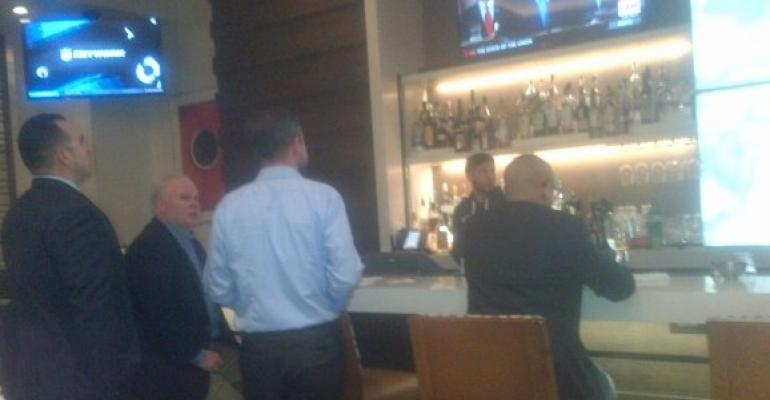Putting into context the significance of infrastructure in the speech the transcript suggests that it was mentioned five times.
The conference is attended mainly by port planners and managers, but also by representatives from the terminals and shipping companies calling at the many ports, who are members in AAPA. An industry panel that included representatives from a carrier- Zim USA, an intermediary, Kuehne & Nagel and a terminal operator, Ports America, took a sea level view of the big trends, all voicing concern about a tight market for lorry drivers - fuelled by regulations requiring electronic monitoring of work hours and routing - and about the commoditisation of ocean carriers.
Doug Wray, representing Ports America, cautioned that more concentration on the carrier side, with their backdrop of consolidation, has brought about greater efforts to wring out costs with carriers “getting back their money through procurement”, in this case, seeking to drive down costs of terminals.
In the same discussion, Doug Hansen from Ceres Terminals, owned by Japanese powerhouse NYK, raised the spectre of port authorities investing in terminals. The new shape of port authorities, historically governmental entities, and how they might infuse private financing, came in presentations by Henry Juan from Seabury Port Finance) and Franc Pigna from Aegir Property Advisors).
While Juan touted the virtues of Public Private Partnerships (PPPs) – where governments finance projects alongside carriers and terminals, Pigna pointed to the nascent trend of port authorities themselves being privatised. Running a port as a business could bring about a streamlined approach to decision making, compared to the more typical governmental ownership, and might stem the tide of investment in obsolete infrastructure.
Not surprisingly, matters related to physical infrastructure, and how to bring in money to finance it, figured prominently in many of the presentations, as did fundamental disruptions in supply chains brought on by the increasing infusion of technology into maritime businesses.
On the subject of infrastructure, well known transport economist Walter Kemmses, previously with engineers Moffat Nichol and now with property brokers JLL, cautioned that a strengthening US economy at a time of chronic underinvestment in transportation could lead to congestion, and the long-forgotten bogey of inflation not seen recently.
Other speakers echoed similar themes, noting that e-commerce with instant deliveries had led to increased capital requirements for inventories, and for congestion around the streets not a “value-add” for the economy overall. These negatives come in spite of the infatuation of US. consumers with “one hour deliveries” from warehouses, which are now moving back into cities closer to urban population centres.
Copyright © 2024. All rights reserved. Seatrade, a trading name of Informa Markets (UK) Limited. Add Seatrade Maritime News to your Google News feed.


